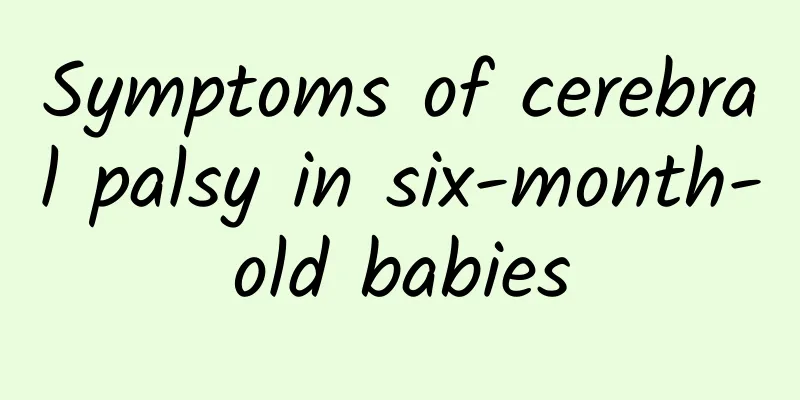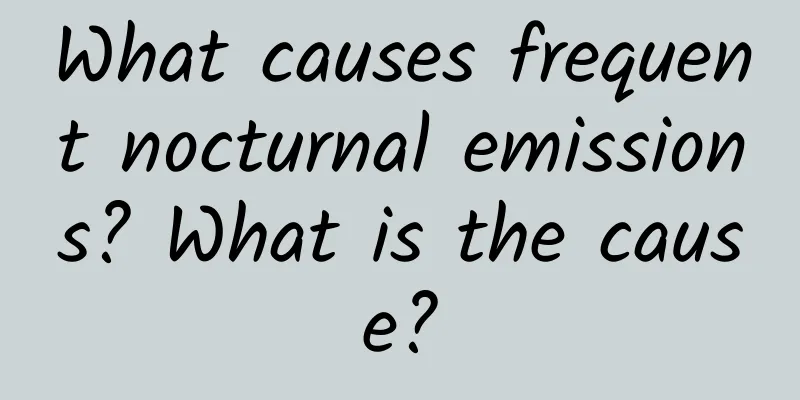Analysis of symptoms of rheumatism in traditional Chinese medicine

|
Our country has a vast territory. Throughout history, the southern region has always been a high-incidence area of rheumatism. Therefore, Chinese medicine has a very long history and evidence for how to treat rheumatism. There are actually many symptoms of rheumatism. Because the symptoms are different, the treatment methods are also different. Traditional Chinese medicine emphasizes symptomatic treatment, and the treatment methods for each rheumatic patient are different. So how does traditional Chinese medicine distinguish rheumatism? What are the symptoms of rheumatism in traditional Chinese medicine? Below is a detailed introduction to the different symptoms and treatments of rheumatism: Symptom 1: If the patient has swelling and pain in muscles, tendons, bones and joints, but no local abnormalities in heat or cold, skin color, or systemic symptoms such as preference for warmth or fear of cold, it is mostly due to rheumatism. Treatment principle: Mainly focus on dispersing wind and removing dampness. Chinese patent medicine: Sanfeng Huoluo Pills, Shujin Huoxue Tablets, Huoluo Dan, Tianma Pills, Rheumatoid Arthritis Tablets, Kunming Mountain Begonia Tablets, Tripterygium Wolleng Tablets, Zhengqing Fengtongning, etc., and Zhuifeng Paste and Shangshi Zhitong Paste can be used externally. Symptom 2: If the patient has swollen and painful muscles, tendons, bones and joints, is afraid of cold and heat, and prefers both warmth and coolness in the joints, it is mostly due to a mixture of cold and heat and blood stasis blocking the meridians. Treatment principle: dispel cold, clear heat, dredge meridians and activate collaterals. Chinese patent medicine: Tongluo Kaibi tablets. Symptom three: If the patient with wind-cold-dampness arthritis also has deficiency of both Qi and blood, he may have sallow complexion, fatigue, shortness of breath, spontaneous sweating, palpitations, poor appetite and loose stools. Treatment principle: tonify Qi and nourish blood. Chinese patent medicine: Dahuoluodan, Huoxuetongmai tablets, etc. Symptom 4: If the patient with wind-cold-dampness arthritis also has liver and kidney deficiency, he may experience soreness and weakness in the waist and knees, fatigue, forgetfulness, frequent urination, joint stiffness and deformity, or irregular menstruation in women and impotence and spermatorrhea in men. If the patient is more Yin-deficient, he may experience dizziness, tinnitus, fever in the five parts of the body, dry throat and night sweats. If the patient is more Yang-deficient, he may have cold body and limbs. Treatment principle: Nourish the liver and kidneys, and strengthen the tendons and bones. Through the above introduction, I believe that everyone has a new understanding of the symptom analysis of rheumatism in traditional Chinese medicine, and has a good method for how to treat and prevent rheumatism. However, here, relevant experts would like to remind all rheumatism patients that if you are a rheumatism patient, you must go to a regular hospital for treatment in time, and do not blindly believe in folk remedies, so as not to delay the disease. |
<<: Treatment of rheumatism in traditional Chinese medicine
>>: What are the side effects of taking Chinese medicine?
Recommend
What is the best medicine for skin diseases?
With the development of various industries and ch...
What to do about ulcerative stomatitis
Ulcerative stomatitis, commonly known as oral ulc...
Unilateral nose bleeding
Whenever it is hot in summer, the air will be par...
Why does my arm bone hurt?
Pain inside the arm bones is a type of osteoarthr...
Can coarse salt hot compress help lose weight?
Losing weight has always been a concern for obese...
Is it okay not to have a denture after tooth extraction?
Should we wear dentures after tooth extraction? S...
How to effectively treat osteoarthritis
If osteoarthritis is not effectively treated, it ...
Treatment for sweaty hands and feet
Sweating of the hands and feet can be treated by ...
Angelica, Astragalus and Panax notoginseng for removing freckles
There is a very popular folk remedy on the Intern...
Symptoms of chronic colitis
Chronic colitis will not attack so quickly, but w...
Can arteriosclerosis be reversed?
Arteriosclerosis is actually reversible, because ...
What to do about inner corner wrinkles?
Wrinkles are something that everyone will experie...
There will be big problems if everyone does cupping to drive away the cold!
After the beginning of autumn, the weather is no ...
What are the effects of dog skin plaster
Dog skin plaster is a very commonly used external...
Why do I have stomach pain after taking birth control pills? Do birth control pills also have side effects?
Many people have the habit of taking birth contro...









